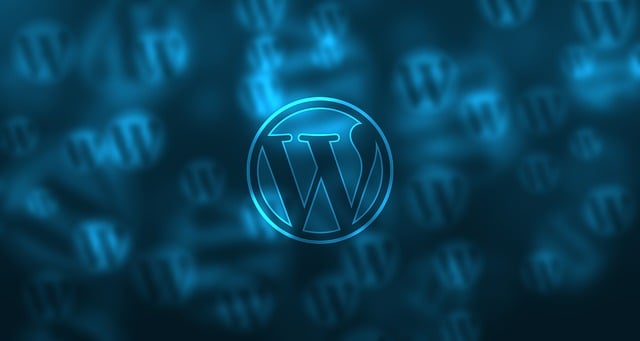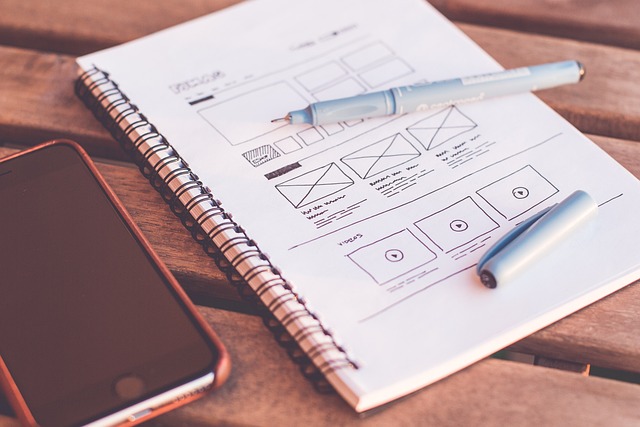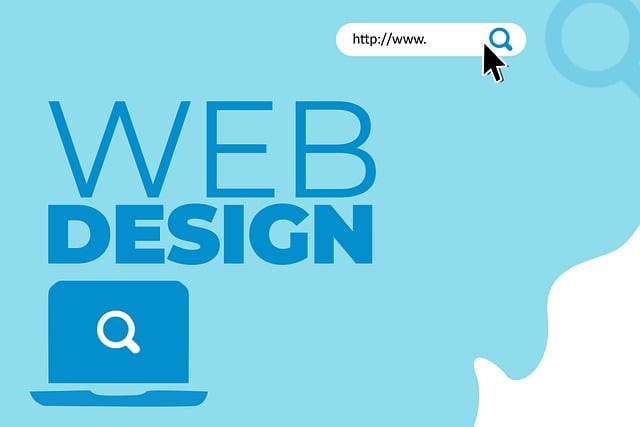WordPress Design is a user-friendly platform for creating dynamic websites, from blogs to e-commerce platforms. Its customizable themes, plugins, and large developer community make it adaptable and easy to use. With reliable hosting and a unique domain, you can customize the look and feel using built-in tools and CSS. WordPress focuses on clean layouts, intuitive navigation, and responsive design for enhanced user experience. Security is key; keep software updated, use strong passwords, and implement firewalls for protection.
WordPress Design is more than just a website builder; it’s a versatile platform empowering creators to build beautiful, functional online spaces. This article explores WordPress website development from foundation to finishing touches. We’ll guide you through setting up your environment, customizing themes, and adding unique styles with CSS. Discover how plugins extend functionality, learn best practices for content management and SEO, and understand the importance of security and maintenance. Additionally, we’ll delve into advanced features and custom development options.
What is WordPress and Why Choose It for Website Development?

WordPress is an open-source content management system (CMS) that has become a popular choice for website development. It offers a user-friendly interface and powerful features, making it accessible to both beginners and experienced developers. With WordPress Design, you can create dynamic websites with ease, from simple blogs to complex e-commerce platforms.
One of the key reasons why many people choose WordPress is its extensive customization options. There’s a vast library of themes and plugins available, allowing users to personalize their sites’ look and functionality. This flexibility ensures that your website can grow and adapt to your needs over time. Additionally, WordPress has a large community of developers and a wealth of online resources, making troubleshooting and learning new techniques more accessible than ever.
Setting Up Your WordPress Environment: Hosting, Domain, and Installation

To set up your WordPress environment for website development, you’ll need three key components: hosting, a domain name, and an installation process.
First, choose a reliable web hosting provider that meets your site’s needs. Consider factors like speed, uptime, security, and customer support. Next, register a unique domain name that represents your brand or business. This is your website’s address on the internet. Once you have hosting and a domain, download WordPress from its official website and install it on your server. Most hosting providers offer one-click installation options to simplify this process.
Customizing Your WordPress Theme: Design and Layout Options

Customizing your WordPress theme goes beyond choosing a pre-made design. WordPress Design offers a plethora of options to tailor both the visual and functional aspects of your website to suit your unique brand identity and user experience goals.
You can modify layouts, color schemes, fonts, and widget placements to create a distinct look and feel. Many themes also include customizer tools that allow you to preview changes in real-time, ensuring precise control over every element of your site’s design. Whether you’re aiming for a minimalist aesthetic or a dynamic, feature-rich layout, WordPress Design provides the flexibility to turn your vision into a reality.
Creating a Unique Look: CSS Styling and Customization Techniques

Creating a unique look for your WordPress website involves CSS styling and customization techniques. CSS (Cascading Style Sheets) is a language that allows you to control the visual presentation of your site, from font choices and color schemes to layout and animations. By understanding CSS, you can craft a design that reflects your brand identity and captures the attention of your audience.
One powerful aspect of WordPress Design is the ability to tailor every element to your liking. You can adjust styles for headings, paragraphs, images, buttons, forms, and more. Customization options include changing fonts, adjusting margins and padding, adding gradients or shadows, and even creating responsive designs that adapt to different screen sizes. This level of control ensures your website stands out in a crowded digital landscape.
Building Functionality: Plugins and Their Role in WordPress Development

WordPress development offers immense flexibility and customization options through its vast library of WordPress Design plugins. These tools extend the functionality of a website beyond what core WordPress provides, enabling developers to add features like contact forms, e-commerce capabilities, search engine optimization tools, and more. Plugins streamline the development process, allowing for rapid creation and enhancement of websites without needing to write extensive code from scratch.
Choosing the right plugins is key to ensuring seamless integration and optimal performance. Developers should consider factors such as compatibility with core WordPress versions, regular updates for security patches, and user reviews to avoid potential conflicts or bugs. By strategically selecting and utilizing plugins, developers can create dynamic, feature-rich WordPress websites tailored to meet specific client needs and industry standards.
Content Management: Posting, Pages, and Optimizing for SEO

Security and Maintenance: Protecting Your WordPress Website

Securing and maintaining your WordPress website is a crucial aspect of WordPress design. Regular updates are essential to protect against vulnerabilities and bugs, so ensure you keep both the WordPress core, themes, and plugins up-to-date. Strong passwords are also vital; consider using two-factor authentication for an extra layer of security.
Implementing robust security measures like firewalls and malware scanning can further safeguard your site. Regular backups are another critical component, ensuring you can restore your website if any issues arise. By following these best practices, you can help protect your WordPress website from potential threats, keeping it running smoothly and securely.
Advanced Features and Custom Development: Expanding Your WordPress Site's Capabilities

WordPress Design offers advanced features and custom development options that can significantly enhance your site’s functionality and visual appeal. By leveraging these capabilities, you can create a unique online presence tailored to your brand and target audience needs. Custom plugins and themes allow for the integration of specialized features not readily available in standard WordPress offerings.
For instance, e-commerce functionality can be extended with custom shopping cart solutions, while advanced SEO plugins optimize your site’s visibility on search engines. Additionally, dynamic content displays, such as interactive sliders and personalized user experiences based on behavior, can boost engagement. Custom development also enables seamless integration with third-party services, expanding your website’s capabilities beyond standard WordPress functionalities.
